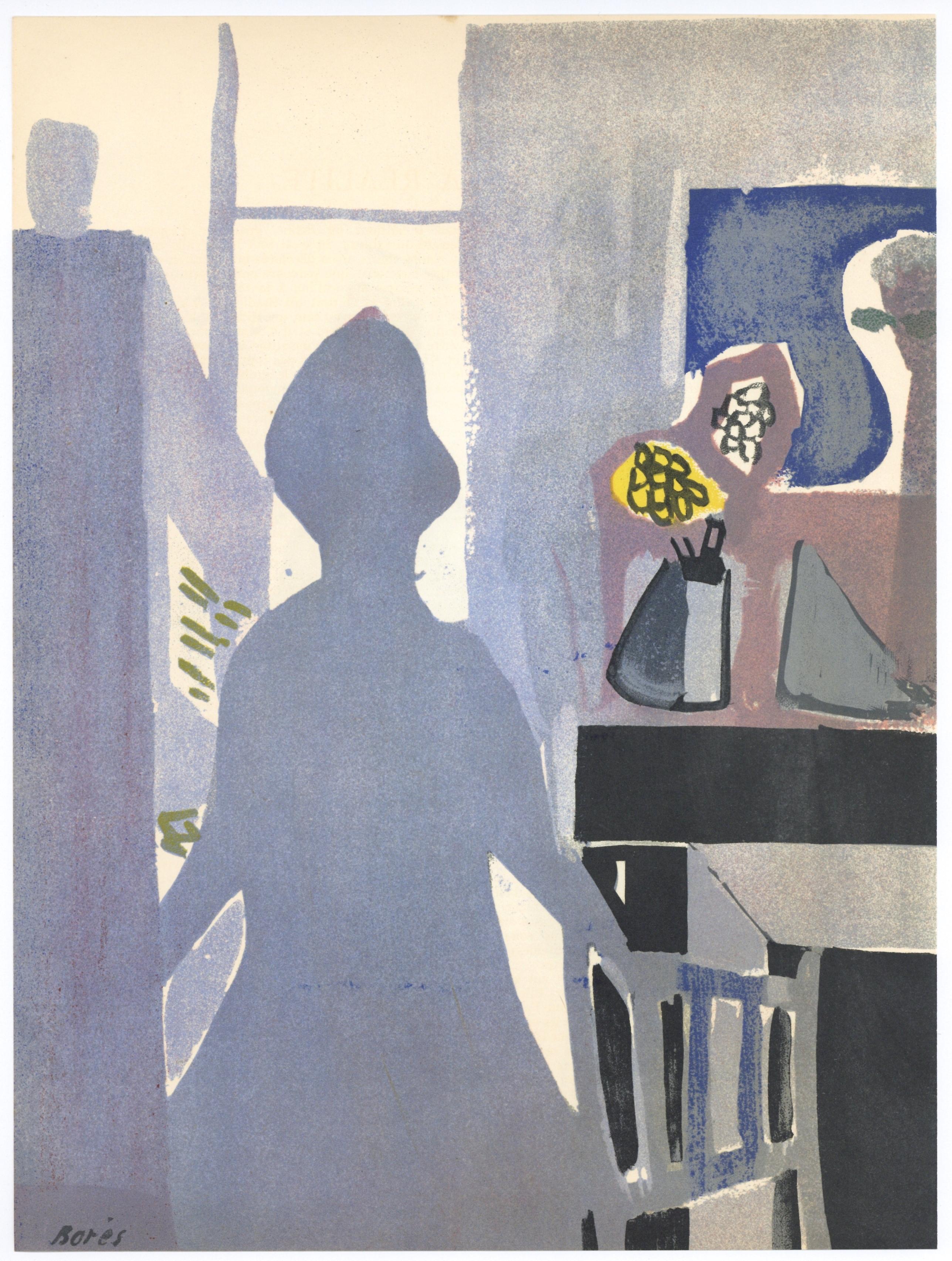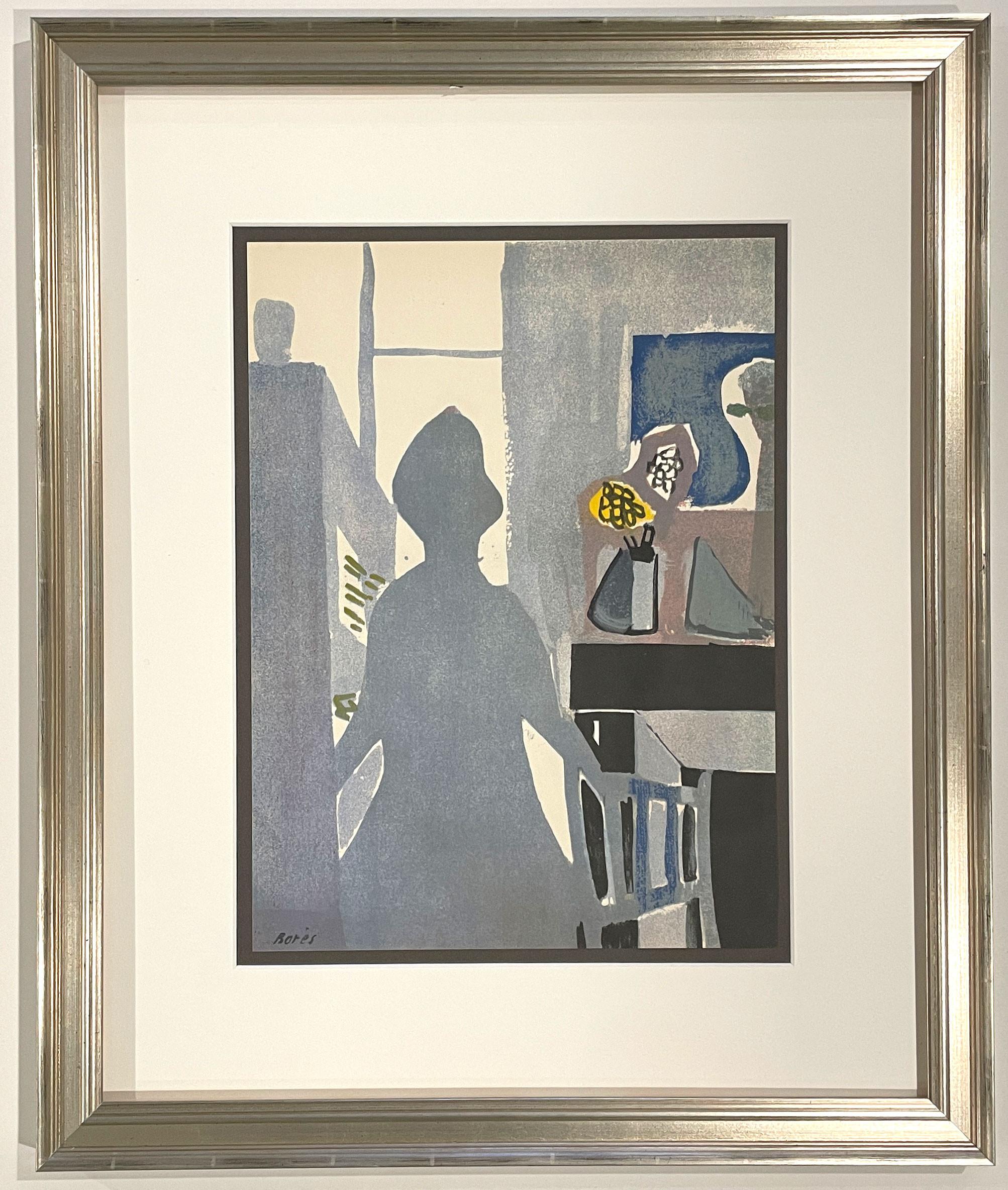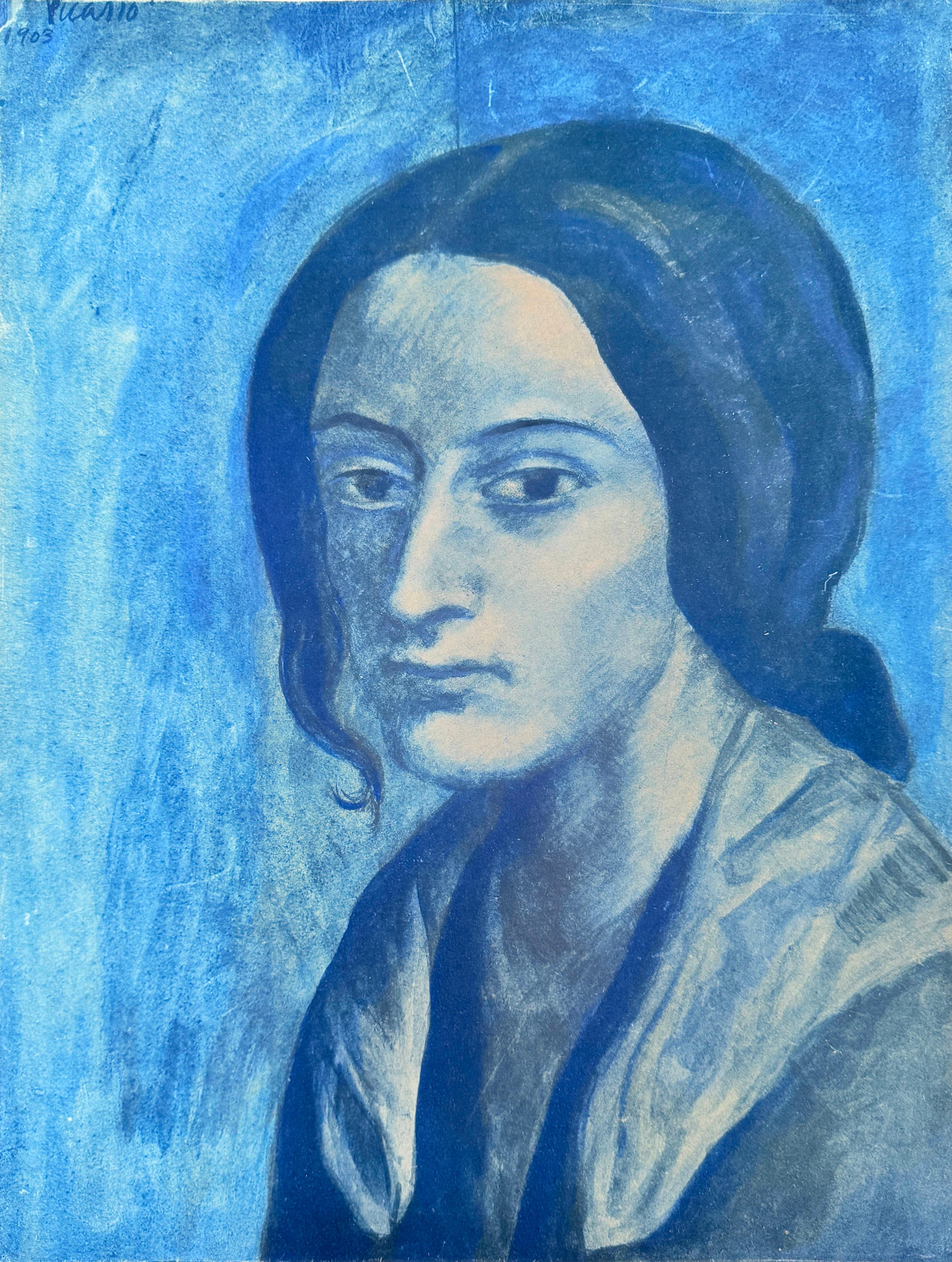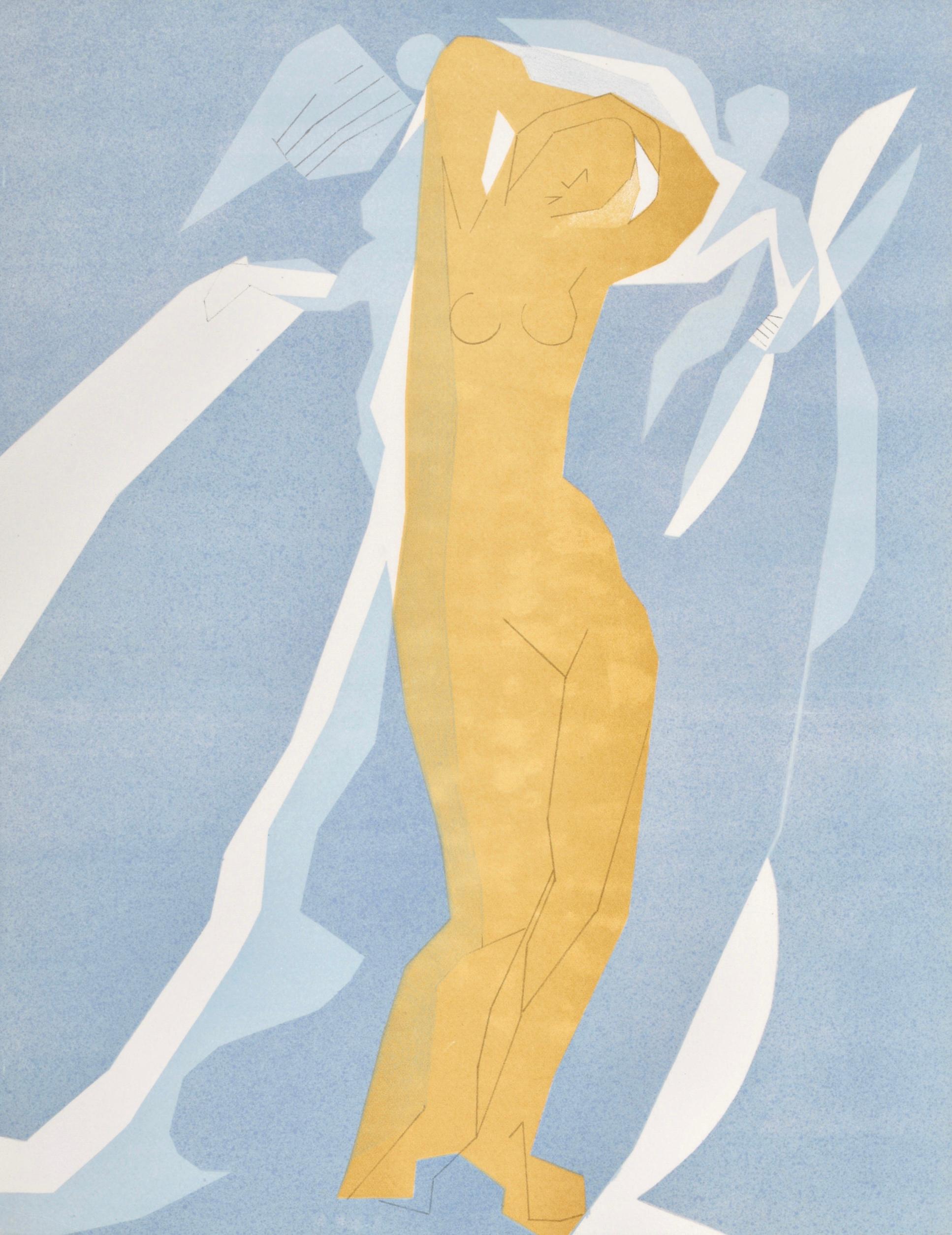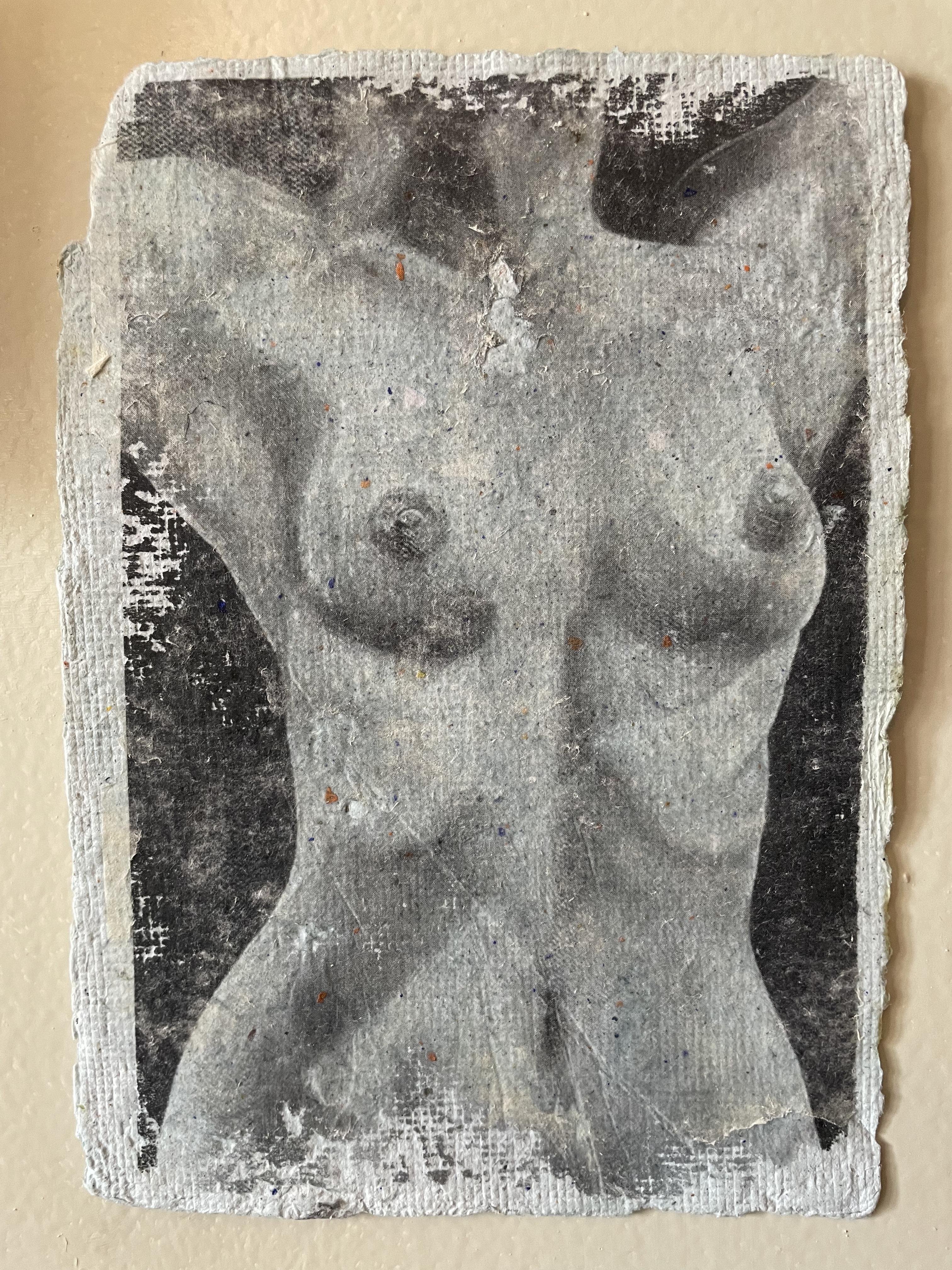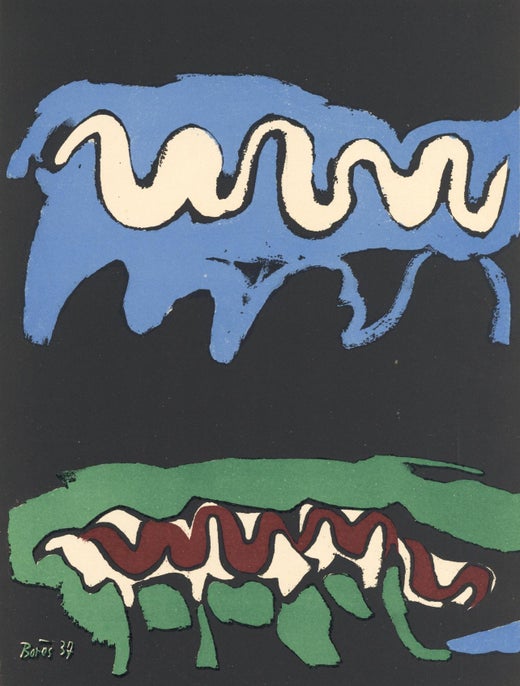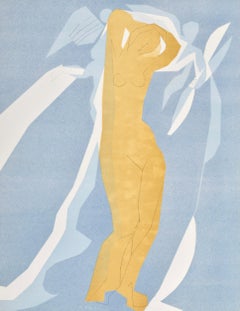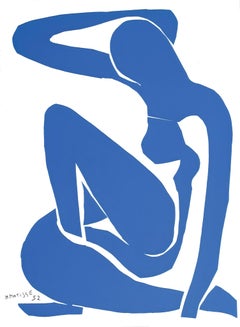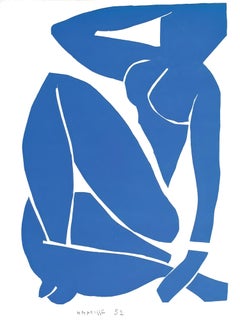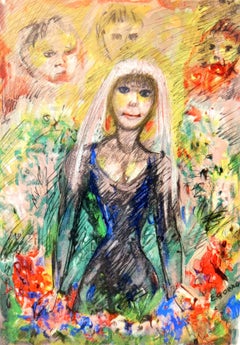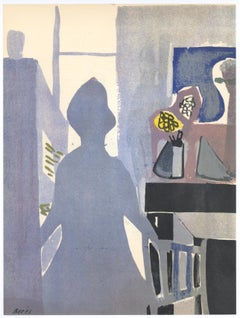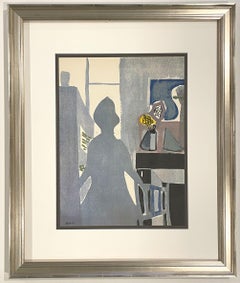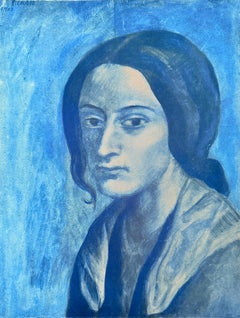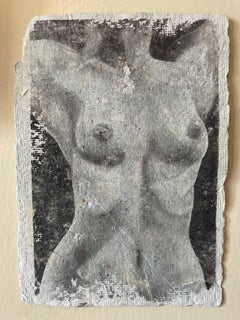Items Similar to La Femme en Bleu, Verve: Revue Artistique et Littéraire
Want more images or videos?
Request additional images or videos from the seller
1 of 11
Francisco BoresLa Femme en Bleu, Verve: Revue Artistique et Littéraire1953
1953
$716
$89520% Off
£540.78
£675.9720% Off
€624.98
€781.2220% Off
CA$1,004.30
CA$1,255.3720% Off
A$1,116.88
A$1,396.1020% Off
CHF 584.63
CHF 730.7920% Off
MX$13,624.56
MX$17,030.7020% Off
NOK 7,346.14
NOK 9,182.6820% Off
SEK 6,910
SEK 8,637.4920% Off
DKK 4,665.07
DKK 5,831.3320% Off
About the Item
Lithograph on vélin des Papeteries du Marais paper. Paper Size: 14 x 10.25 inches. Inscription: Signed in the plate and unnumbered, as issued. Notes: From the album, Verve: Revue Artistique et Littéraire, Vol. VII, N° 27-28, 1953. Published by Éditions de la revue Verve, Paris, under the direction of Tériade, éditeur, Paris; printed by Mourlot Frères, Paris, January 15, 1953, in an edition of MM. Excerpted from the album (translated from French), This double issue of Verve was completed to print on January 15, 1953 by Draeger for typography and gravure and by Mourlot for lithography. Additional notes: Excerpted from Poppy Sfakianaki, ‘La revue Verve (1937–60): Un tremplin pour la carrière de Tériade dans les éditions d’art’, Journal of European Periodical Studies, 4.2 (Winter 2019), 70–89, In 1937, Tériade (1897-1983) met David Smart (1892-1952), the American publisher of Esquire magazine, who offered him to the opportunity to collaborate on the creation of 'the most beautiful magazine in the world'. Smart recognized in Tériade not only his ability as a publisher and knowledge of art history, but also his professional network and the name he made for himself in the Parisian art world—all crucial advantages for an editorial business. Having had the commercial conviction that beauty "sells", Smart intended to address the American public, attracted to French art, including Modern art, and the myth of artistic life in Paris. For his part, Tériade saw the proposed collaboration as an opportunity for a foray into the American market—a powerful ally of modern art in France. Éditions de la Revue Verve was founded in November 1937, largely funded by Smart, and directed by Tériade. Verve: Revue Artistique et Littéraire was a luxurious and ambitious art publication, published not only in French, but also in English in its early years, and distributed in Europe and the United States. Its configuration was reminiscent of that of the French art journals Cahiers d'art, Minotaure, and Arts et métiers graphiques, as well as that of the American art magazine, Coronet. However, Verve was superior to the competition because of its copious iconography and high printing quality. Its price varied between 60 and 150 francs (for double numbers) before the war, and between 120 and 350 francs during the war. Given its high price, the magazine mainly targeted art dealers, collectors, bibliophiles and wealthy art lovers. The exquisite aesthetics of the magazine was due to its editor-in-chief, Tériade, who sought to develop a platform for dialogue between image and text, visual arts and literature. The dominant factor of each issue remains its iconography, composed of reproductions of works by modern artists that Tériade admired, and 'masters', mainly of the French tradition, alongside photos and miniatures of medieval manuscripts. Tériade undoubtedly realized with his magazine an idea expressed in 1934 according to which books served as an 'ideal museum' or an exhibition where all the artistic masterpieces are gathered, which Malraux developed later in Le Musée imaginaire (Geneva: Skira, 1947), parts of which will appeared in Verve. During Second World War the periodicity of the journal changed, then irregular, and the less varied nature of the subjects treated. Thus, the issues published during the War (as well as in 1945 and 1946) were devoted exclusively to the reproduction of medieval illuminations. Finally, the special issues of the post-war period each present the recent production of a modern art painter. Only numbers 8 (1940) and 27-28 (1952) were an exception with a more varied summary. Verve's reception was positive as evidenced by several laudatory press articles throughout its run. The success of the magazine, Tériade's passion for modern art and medieval manuscripts, his admiration for the publications of Ambroise Vollard and Albert Skira, and his knowledge of the world of bibliophiles, soon led him to amplify his editorial activity. In 1943, despite the practical difficulties imposed by the war, his first artist's book was published, written and illustrated by Georges Rouault. Until 1975, Tériade published Éditions de la Revue Verve, nine books by modern artists, such as Henri Matisse, Pablo Picasso, Marc Chagall, Joan Miró, entirely composed (text and images) by the artists; seventeen books illustrated by recognized modern artists; an album of lithographs by Fernand Léger on Paris; two photographic albums by Henri Cartier-Bresson; two monographs on the artists André Beaudin and Francisco Borès; a luxurious series of reproductions of medieval illuminations; and, a series of portfolios on great French architecture. Ultimately, the comparative study of the journal and the editions of Verve: Revue Artistique et Littéraire illustrates the importance of the tacit relational dynamic that results from the relations of collaboration and exchange of symbolic capital based on common perceptions and interests, as well as on feelings of mutual friendship and appreciation of actors in the art world who share a visual and bibliophilic culture and thus contribute to the success of the journal and the publishing house.
FRANCISCO BORES (1898-1972) was an important figure of twentieth-century European art. His presence was important among the second wave of Spanish artists who arrived in Paris in the 1920s, which also included Pablo Picasso, Ginés Parra, Pedro Flores, Antoni Clavé; although in his own country he was not really recognized until well into the 1970s when aspects of his work that did not fit in with the dominant informalism and social realism were finally valued. The style of Bores was forged following his close contact with the greatest painters of the first Vanguard: Pablo Picasso and Henri Matisse. He admired their manner of constructing forms, classicism, and later the cubist explosion. Bores harmonizes these influences in his work, and goes beyond them. His artworks are showcased at the Museo de Arte Contemporáneo in Madrid.
- Creator:Francisco Bores (1989 - 1972, Spanish)
- Creation Year:1953
- Dimensions:Height: 14 in (35.56 cm)Width: 10.25 in (26.04 cm)
- Medium:
- Movement & Style:
- Period:
- Condition:
- Gallery Location:Southampton, NY
- Reference Number:1stDibs: LU1465216383682
Francisco Bores
Francisco Bores López (Madrid, May 5, 1898 - Paris, May 10, 1972) was a Spanish painter of the so-called New School of Paris. His artistic training originated both in the Cecilio Pla painting academy, where he met Pancho Cossío, Manuel Ángeles Ortiz or Joaquín Peinado, and in the literary gatherings in Madrid related to ultraism. At this time he made engravings and woodcuts for a large number of magazines such as Horizonte, Cruz y Raya, Index, Revista de Occidente. In 1922 he participated in the National Exhibition of Fine Arts. In 1925 he participated in the first exhibition of the Iberian Artists Society. The limited success of this exhibition pushes him to go to Paris. In this city he shared a studio with the Spanish painter Pancho Cossío and also met Picasso and Juan Gris. In 1927 he held his first solo exhibition in Paris. From this moment on, Bores integrates himself into the Parisian artistic environment where he will live practically his entire life. In 1928, his first exhibition in a gallery in the United States, in 1930 he exhibited again, within a group exhibition at the Museum of Modern Art in New York. In the following years, he continued exhibiting in different galleries in Paris, such as the Georges Petit Gallery, the Bernheim Gallery and the Vavin Raspail Gallery. He also participates in several group exhibitions, highlighting the Exhibition of Contemporary Spanish Art at the Jeu de Paume Museum in Paris, he also illustrates books and art magazines such as Minotauro. Contracts with the Zwemmer Galleries in London and Galerie Simon in Paris. Exhibitions in the United States, at the Buchholz Gallery in New York. He spent the Second World War in Saint Jean de Luz where he resumed his friendship with Matisse. In 1947 the French State acquired, for the first time, a work by Bores, in 1949 it was the Museum of Modern Art in New York that acquired his paintings. Its exhibition activity is resumed throughout Europe: France, Germany, Denmark, Italy. His inclusion in the painters of the Louis Carré Gallery, one of the most prestigious in Paris, and therefore in the world, in those years (1954) stands out. He continues, sporadically, to illustrate books (five linocuts "The Cry for the Death of Ignacio Sánchez Mejias" by Federico García Lorca, lithographs to illustrate the complete works of Albert Camus published by the French Imprimerie nationale in 1962). In 1969, he exhibited at the Theo Gallery in Madrid what his approach to the Spanish public represented, which was practically unaware of his work except in professional circles where, on the other hand, it was highly appreciated. In 1971 he exhibited again in this same Theo Gallery, passing away in Paris in 1972. In Bores's work, the critic Joaquín de la Puente points out several periods: Renewed classicism (1923-1925)
Neo cubism (1925-1929)
Painting-Fruit (1929-1933)
Interior scenes (1934-1949)
Style in white (1949-1969)
About the Seller
4.9
Platinum Seller
Premium sellers with a 4.7+ rating and 24-hour response times
Established in 1978
1stDibs seller since 2021
1,173 sales on 1stDibs
Typical response time: <1 hour
- ShippingRetrieving quote...Shipping from: Southampton, NY
- Return Policy
Authenticity Guarantee
In the unlikely event there’s an issue with an item’s authenticity, contact us within 1 year for a full refund. DetailsMoney-Back Guarantee
If your item is not as described, is damaged in transit, or does not arrive, contact us within 7 days for a full refund. Details24-Hour Cancellation
You have a 24-hour grace period in which to reconsider your purchase, with no questions asked.Vetted Professional Sellers
Our world-class sellers must adhere to strict standards for service and quality, maintaining the integrity of our listings.Price-Match Guarantee
If you find that a seller listed the same item for a lower price elsewhere, we’ll match it.Trusted Global Delivery
Our best-in-class carrier network provides specialized shipping options worldwide, including custom delivery.More From This Seller
View AllNu de femme en jaune et bleu, Regards sur Paris, André Beaudin
By Andre Beaudin
Located in Southampton, NY
Lithograph on vélin d’Arches paper. Inscription: unsigned and unnumbered, as issued. Good condition. Notes: from the folio, Regards sur Paris, 1963. Published by André Sauret, Paris;...
Category
1960s Modern Landscape Prints
Materials
Lithograph
$1,036 Sale Price
20% Off
Free Shipping
Matisse, Nu Bleu VI (Duthuit 139), Verve: Revue Artistique (after)
By Henri Matisse
Located in Southampton, NY
Lithograph on vélin du Marais paper. Inscription: Unsigned and unnumbered, as issued. Good condition. Notes: From the volume, Verve: Revue Artistique et Littéraire, Vol. IX, N° 35-36...
Category
1950s Modern Landscape Prints
Materials
Lithograph
$1,436 Sale Price
20% Off
Free Shipping
Matisse, Nu Bleu IX (Duthuit 139), Verve: Revue Artistique (after)
By Henri Matisse
Located in Southampton, NY
Lithograph on vélin du Marais paper. Inscription: Unsigned and unnumbered, as issued. Good condition. Notes: From the volume, Verve: Revue Artistique et Littéraire, Vol. IX, N° 35-36...
Category
1950s Modern Landscape Prints
Materials
Lithograph
La mariée, Vingt fables de La fontaine, Edouard Goerg
By Edouard Goerg
Located in Southampton, NY
Woodcut on vélin d'Arches paper. Inscription: signed in the plate and unnumbered, as issued. Good condition. Notes: from the folio, Vingt fables de La fontaine, 1961. Published by Éd...
Category
1960s Modern Landscape Prints
Materials
Woodcut
$716 Sale Price
20% Off
Free Shipping
Matisse, Nu Bleu VII (Duthuit 139), Verve: Revue Artistique (after)
By Henri Matisse
Located in Southampton, NY
Lithograph on vélin du Marais paper. Inscription: Unsigned and unnumbered, as issued. Good condition. Notes: From the volume, Verve: Revue Artistique et Littéraire, Vol. IX, N° 35-36...
Category
1950s Modern Landscape Prints
Materials
Lithograph
$956 Sale Price
20% Off
Free Shipping
Matisse, Nu Bleu I (Duthuit 139), Verve: Revue Artistique (after)
By Henri Matisse
Located in Southampton, NY
Lithograph on vélin du Marais paper. Inscription: Unsigned and unnumbered, as issued. Good condition. Notes: From the volume, Verve: Revue Artistique et Littéraire, Vol. IX, N° 35-36...
Category
1950s Modern Landscape Prints
Materials
Lithograph
$956 Sale Price
20% Off
Free Shipping
You May Also Like
"La femme en bleu" original lithograph
By Francisco Bores
Located in Henderson, NV
Medium: original lithograph. From the rare issue of Verve (Volume 7, Number 27-28), published in Paris by Teriade in 1952 and printed by Mourlot. Size: 14 x 10 3/8 inches (353 x 264 ...
Category
1950s Prints and Multiples
Materials
Lithograph
La Femme En Bleu
By Francisco Bores
Located in Washington, DC
Artist: Francisco Bores
Medium: Lithograph
Title: La Femme En Bleu
Portfolio: Verve Vol VII No. 27-28
Year: 1952
Edition: 6000
Signed: Signed in the pl...
Category
1950s Figurative Prints
Materials
Lithograph
Portrait mélancolique d'une femme en bleu
By Pablo Picasso
Located in OPOLE, PL
Pablo Picasso (1881-1973) - Portrait mélancolique d'une femme en bleu
Pochoir from 1961.
The edition: 442/500 written in pencil.
Dimensions of work: 53.8 x 41.5 cm
Publisher: Au ...
Category
1960s Modern Figurative Prints
Materials
Stencil
Femme on Blue
Located in Kansas City, MO
Brittany Noriega
Femme on Blue
Laser transfer print on handmade paper
Year: 2021
Size: 8.5x6in
Signed by hand
COA provided
Ref.: 924802-1654
Tags: fi...
Category
2010s Modern Prints and Multiples
Materials
Handmade Paper, Laser
$188 Sale Price
40% Off
Lady On Blue
By Kismine Varner
Located in Houston, TX
Vibrant etching of woman on blue background by American artist Kismine Varner, circa 1990. Signed lower right.
Original artwork on paper displayed on a white mat with a gold bord...
Category
1990s Portrait Prints
Materials
Etching
Femme a la Collerette Bleue, Cubist Lithograph after Pablo Picasso
By Pablo Picasso
Located in Long Island City, NY
Viewed from an angle, Pablo Picasso's print of this woman showcases his versatility as an artist. Set against a deep plum background, the angled sitter is represented in a less radic...
Category
Late 20th Century Cubist Portrait Prints
Materials
Lithograph
More Ways To Browse
La Forge
1920s Cartier
Purple Platform
Coronet Plate
William Simpson On Sale
Bronze Sculpture By Rosa
Dior Equestrian
Used Grenade
Vintage 70S Nudes
Waterfall Sculpture
Boxer Sculpture
Dali Bronze Sculpture
Eighteenth Century French Painting
Indian Chief Painting
Ivan Summers
Original Mexican Posters
Pair Of Dog Paintings
Pan Am
